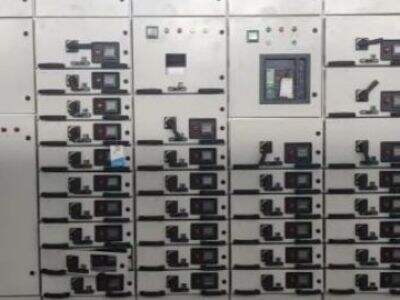Second, we are the Switchgear, which is an important part of the electric system which will help control electricity. Switchgear are broadly classified into two major types which are gas-insulated and air-insulated. Now, each of them has its pros and cons which we must consider while selecting the best one suited to an electrical system. So without much ado, let’s dwell down and see what good and bad these air and gas insulators switch gears have.
Why Should You Use Air-Insulated Switchgear?
Air-insulated switchgear (AIS) is a kind of switchgear that uses air as an insulating medium against electrical faults. One of the primary benefits of Shangdian air-insulated switchgear is its simplicity. This makes it a very simple solution to set up, and because of that, it is a great solution for multiple electrical systems. There are no harmful gases that pollute our environment which makes air-insulated switchgear the best switchgear for the environment.
So, you need to consider factors from energy consumption to maintenance, monitoring, and protection.
The switchgear can be characterized by efficiency and reliability, factors very important for the choosing of the switchgear in electrical systems. Air-insulated switchgear panels is the most reliable and energy-efficient choice. It has no problems working with high voltage and high current, making it a good candidate for distributing power. Moreover, air-insulated switchgear is known for its longevity, resulting in lower maintenance and replacement costs in the long run.
Gas-insulated Switchgear Explained: What You Need to Know
Another type of switchgear using gas for protection is gas-insulated switchgear. The sizeable advantages of gas-insulated switchgear include their small scale. It occupies a fraction of the space compared to air-insulated switchgear, thus being an ideal solution for compact electrical systems. Gas-insulated switchgear is also known for its high reliability and safety level, which is why many companies prefer it.
But, gas-insulated switchgear has some disadvantages. The AVTc — that is, the alternative vacuum switchgear — the major issue with it is that it costs more than air-insulated switchgear. Costly: Installation and maintenance of gas insulated medium voltage switchgear is comparatively expensive, which may present an issue for some organizations. It also requires regular inspection and upkeep to ensure its efficient operation, incurring a further expense.
Air-Insulated vs Gas-Insulated Switchgear Comparison
Considerations when choosing between air-insulated switchgear and gas-insulated switchgear include the unique requirements of the electrical system. Air-insulated switchgear is an ideal and eco-friendly choice that is easy to install and maintain. It is also dependable for power distribution, managing high voltages and currents with ease.
In contrast, gas-insulated switchgear is a compact and secure solution that is well suited for industrial applications. With a higher initial cost and a requirement for routine maintenance, gas-insulated switchgear ensures a high level of reliability but also is interspersed with safety-worthy features, hence it is the preferred choice of organizations across the world.

 EN
EN
 AR
AR
 BG
BG
 HR
HR
 CS
CS
 DA
DA
 NL
NL
 FI
FI
 FR
FR
 DE
DE
 EL
EL
 HI
HI
 IT
IT
 JA
JA
 KO
KO
 NO
NO
 PL
PL
 PT
PT
 RU
RU
 ES
ES
 TL
TL
 IW
IW
 ID
ID
 SR
SR
 UK
UK
 VI
VI
 HU
HU
 TH
TH
 TR
TR
 AF
AF
 MS
MS
 IS
IS
 AZ
AZ
 BN
BN
 LA
LA
 MI
MI
 MN
MN
 KK
KK
 UZ
UZ








